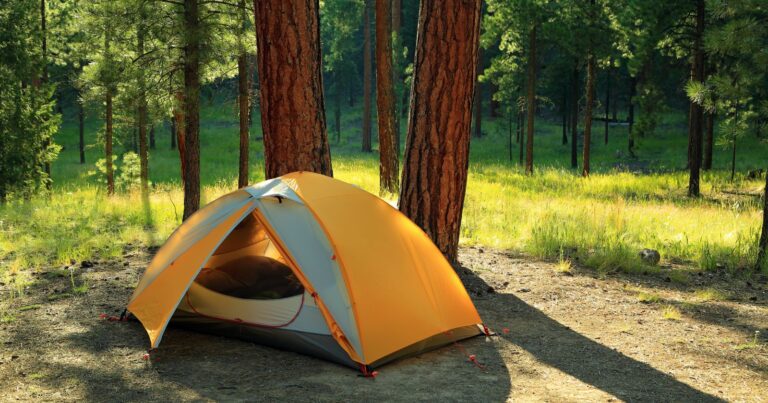How to Light a Coleman Stove: A Step-by-Step Guide for Beginners
Cooking outdoors is a favorite pastime for many, but getting your camp stove lit can be frustrating if you don’t know the proper steps. Fumbling with matches and knobs leaves you hungry instead of enjoying a hot meal under the stars.
Lighting a Coleman stove is actually simple once you learn the basic process. With a little setup and care, you’ll have campfire cuisine ready in no time. We’ll walk through the key actions step-by-step so you can master your Coleman stove quickly.
First, check that your Coleman stove is prepped and ready for lighting. Pump it up to pressurize, turn the fuel valve to open, and hold a flame to the burner. Adjust the heat, add your food, and enjoy your meal alfresco! We have all the details you need to light up your Coleman stove with confidence.
Let’s get cooking so you can make the most of mealtime during your next adventure. Nothing beats a good campfire meal when you know how to work your stove.
Pre-Lighting Stove Check and Cleaning
Before you attempt to light the Coleman stove, give it a quick inspection and cleaning:
- Wipe down the cooking surface to remove any dirt, debris, or residue from previous uses.
- Make sure the fuel tank is full and sealed tightly. Check the fuel lines for cracks.
- Clear out any cobwebs or insect nests around the burner that may obstruct lighting.
- Spray some stove cleaner on caked-on messes and scrub clean with a brush.
Taking a few minutes to clean your Coleman stove prevents issues and ensures easy lighting.
Pumping Up the Stove to Pressurize
Coleman camping stoves rely on pressurized fuel held in a tank. This pressure helps propel and ignite the fuel.
To build up proper pressure:
- Find the pump handle on your Coleman stove model.
- Use the handle to pump the stove around 10-15 times. More pumps create higher pressure.
- Listen for the hiss that indicates pressurization after several pumps.
- The stove should feel slightly firm when you press down, not squishy.
Pressurizing the stove before lighting is crucial for forcing the fuel out to the burner. Don’t skip this vital step.
Opening the Fuel Valve
The valve on the Coleman fuel tank controls fuel flow to the burner. Keeping it closed preserves pressurization.
To allow fuel release for lighting:
- Locate the valve knob on the tank.
- Turn or slide the knob counterclockwise to open the valve fully.
- You should hear the pressurized hiss get louder as fuel starts flowing.
- Double check that the valve is completely open to permit maximum fuel for lighting.
Opening the tank valve lets the pressurized fuel come out to the top burner. This provides the necessary fuel source to ignite.
Lighting the Stove Burner
With the stove prepped and fueled, you can now safely light it:
- Use a long match or butane lighter to avoid burning your fingers.
- Hold the flame over the burner tube opening.
- Flip the butterfly handle underneath to the open position. This lets fuel escape.
- The fuel will ignite from the applied flame into a stove-top fire.
For 2-3 burner models, repeat to light all burners individually as needed. Make sure to only light one at a time.
Adjusting the Flame Height
After the initial lighting, adjust the Coleman stove flame to your desired intensity:
- Turn the fuel tank valve knob clockwise slightly to reduce the flame if it seems too high.
- Rotate the knob counterclockwise to raise flame height for faster heating.
- Monitor the flames as you adjust to avoid dangerous flare-ups.
- Let the burner preheat on medium level for best cooking results.
Controlling the valve carefully prevents burning food or risking fire. Get a feel for your stove’s ideal flame levels.
Adding Food to the Stove
Once the Coleman stove flames are stabilized at adequate heating power, you can start cooking!
- For boiling water, place a pot directly over the burner.
- For frying or sautéing, add a cooking pan on top of the stove grate.
- Avoid using excessive oil or liquid to prevent splattering flames.
- Flip or stir food with grilling tools to cook evenly.
- Keep an eye on the flames while cooking in case quick flame adjustments are needed.
Now enjoy cooking up anything from coffee to eggs to steaks on your camp stove!
Extra Safety Tips
- Position the Coleman stove on a flat, heat-safe surface away from debris and leaves.
- Keep the stove area clear of items that could catch fire or block air flow.
- Check that stove control knobs are off before packing up to avoid gas leakage.
- Let the stove fully cool before storing it away to prevent burns or melting.
- Refill the fuel tank before it runs bone dry for optimal stove performance.
- Clean stove surfaces after each use to prevent food or grease residue buildup.
Troubleshooting Common Lighting Issues
Stove won’t light:
- Pump for pressurization, open valve completely, and check fuel level.
- Clear any obstructions around burner tubes.
- Try lighting with a long fireplace match if your lighter won’t reach.
Flames are low:
- Open valve fully to release more fuel.
- Pump stove for higher pressurization.
- Refill tank if empty and re-pressurize.
Flames blow out easily:
- Shield stove from wind. Move to more protected spot.
- Clean burner tubes free of bugs, debris, or oil residue.
- Adjust valve higher to compensate for altitude.
FAQs
How often do I need to pump the stove for pressurization?
Plan to pump the Coleman stove 5-10 times before each use. Pumping helps maintain consistent pressure for good stove performance.
What fuel options work with Coleman stoves?
Coleman liquid fuel is recommended, but white gas or unleaded gasoline can also be used. Never use diesel, jet fuel, or biofuels as they can clog the stove.
Why does my stove make popping or sputtering noises?
This is caused by uneven fuel flow. Make sure the tank valve is fully open. Check for kinks or blockage in the fuel line too. Pumping to increase stove pressure can help.
Can I adjust temperature while cooking?
Yes, use the tank fuel valve to lower or raise the flame height as needed. Just be cautious of flare-ups from sudden pressure changes.
How do I fully extinguish the stove flames?
First turn the tank valve clockwise to low setting to diminish the flames. Then close the butterfly handles on all burners to cut off air flow. The flames will safely extinguish.
Conclusion
With the right steps, lighting a Coleman camping stove is simple. Just remember to clean, pressurize, open the valve, apply a flame, adjust the heat, and start cooking. Refer to the manufacturer instructions for your specific Coleman stove model too.
In no time, you’ll be a pro at firing up your camp stove. That means more days enjoying tasty meals along your outdoor adventures. Get ready to light it up!







